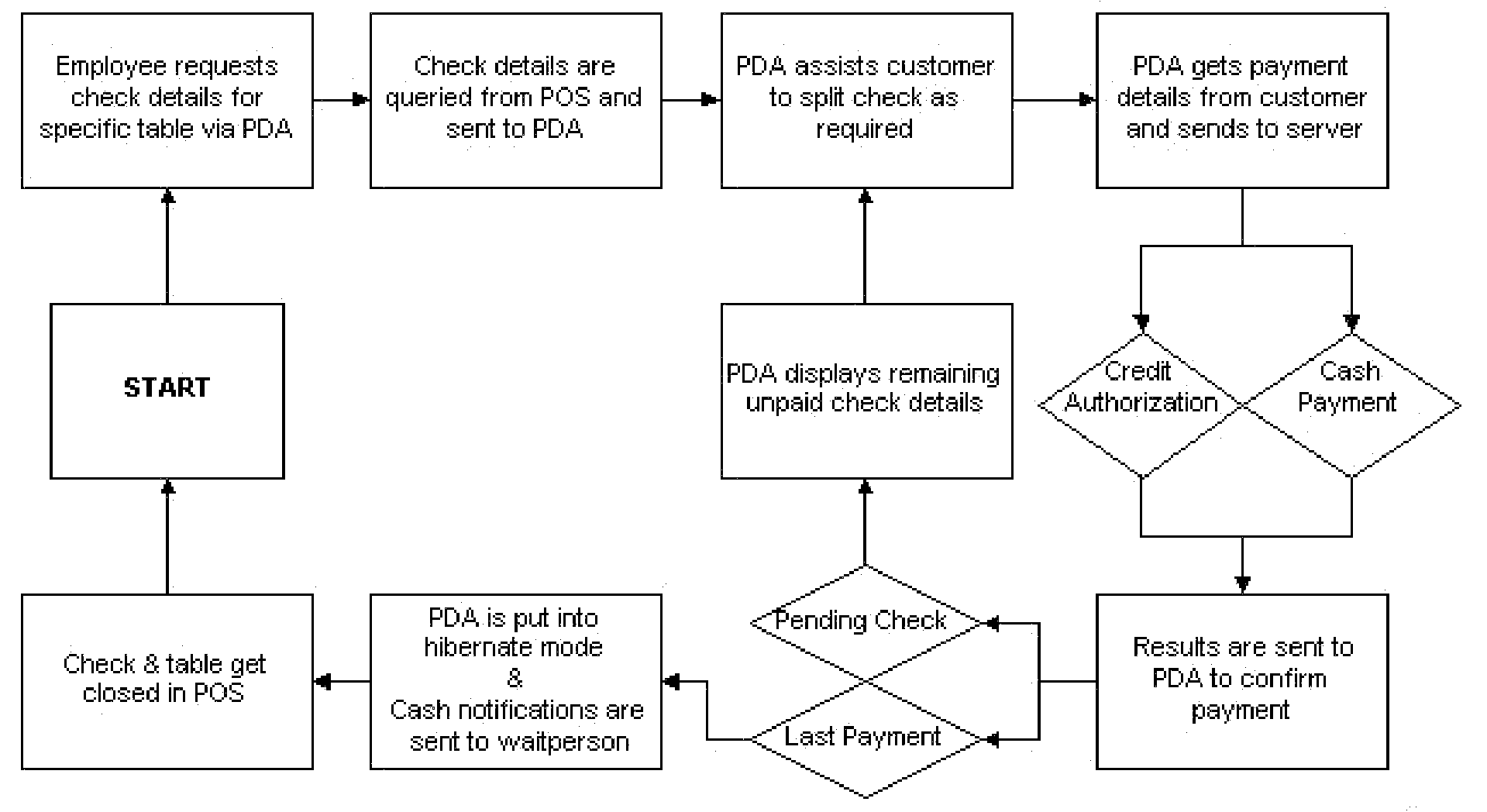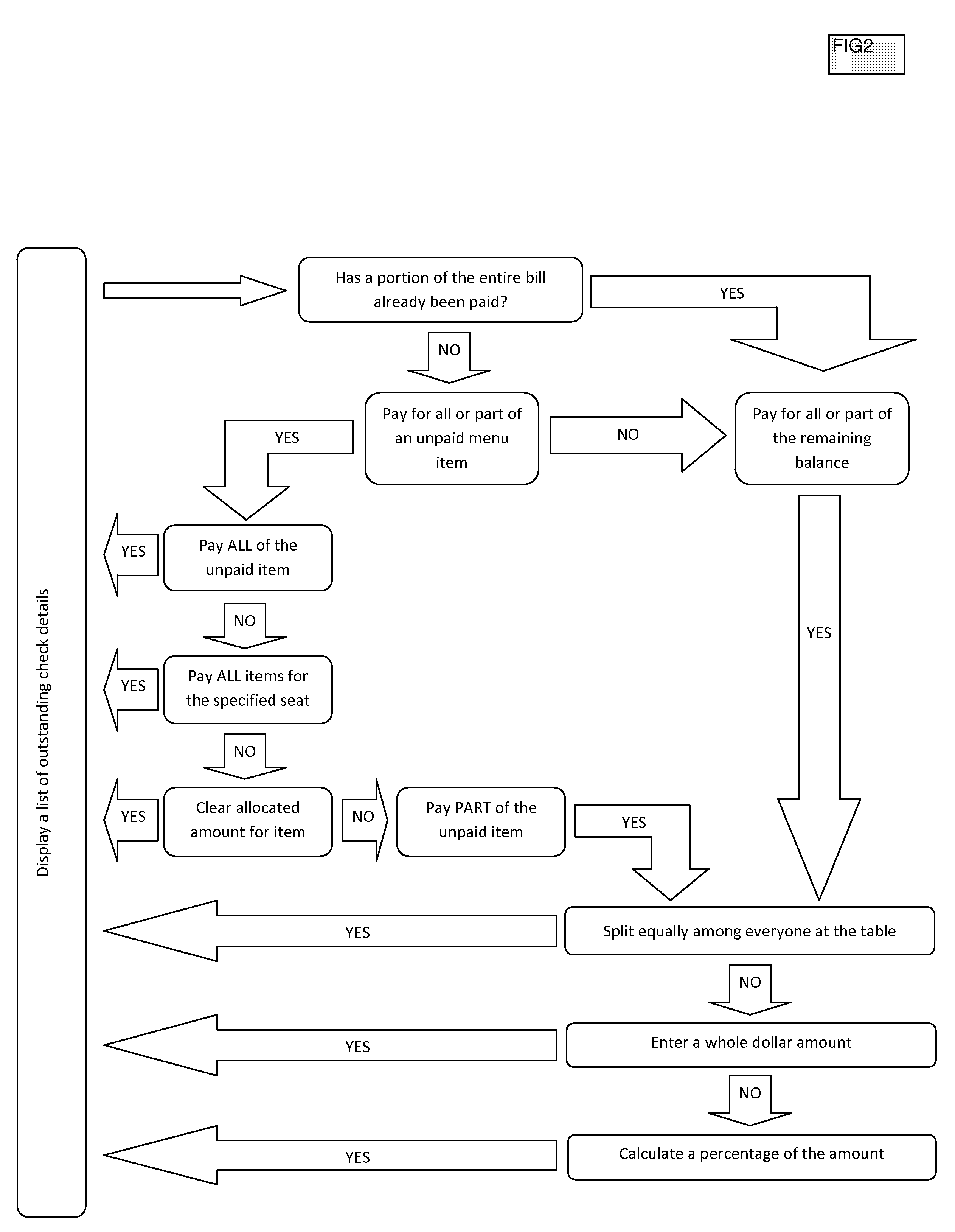Restaurant patron payment system and method for mobile devices
a mobile device and payment system technology, applied in the field of restaurant patron payment system and mobile device payment method, can solve the problems of not providing patrons with the ability to customize their payment amount, unable to meet patrons' needs, so as to reduce the financial burden and efficiently split the bill
- Summary
- Abstract
- Description
- Claims
- Application Information
AI Technical Summary
Benefits of technology
Problems solved by technology
Method used
Image
Examples
Embodiment Construction
[0011]In one embodiment, the mobile computing device may be a Personal Digital Assistant (PDA) or Cellular Phone that communicates over a cellular network and or a Bluetooth or Wi-Fi wireless network; After each patron identifies how much they want to pay from the outstanding bill, their bank card payments can be processed real time (immediately) on the PDA without assistance from the waitperson. Regardless of the communication method, after the check has been fully allocated by the patrons, the amount and details of each bank card transaction will be available for processing and any associated cash can be provided to the waitperson. The check can then be identified as being paid in full and receipts can be printed for each payment.
[0012]An example of how the present invention can be used is as follows; A party of 10 people is seated at a restaurant that has implemented the present invention. After the party has been served, is finished eating and is ready to pay, they communicate t...
PUM
 Login to View More
Login to View More Abstract
Description
Claims
Application Information
 Login to View More
Login to View More - R&D
- Intellectual Property
- Life Sciences
- Materials
- Tech Scout
- Unparalleled Data Quality
- Higher Quality Content
- 60% Fewer Hallucinations
Browse by: Latest US Patents, China's latest patents, Technical Efficacy Thesaurus, Application Domain, Technology Topic, Popular Technical Reports.
© 2025 PatSnap. All rights reserved.Legal|Privacy policy|Modern Slavery Act Transparency Statement|Sitemap|About US| Contact US: help@patsnap.com



